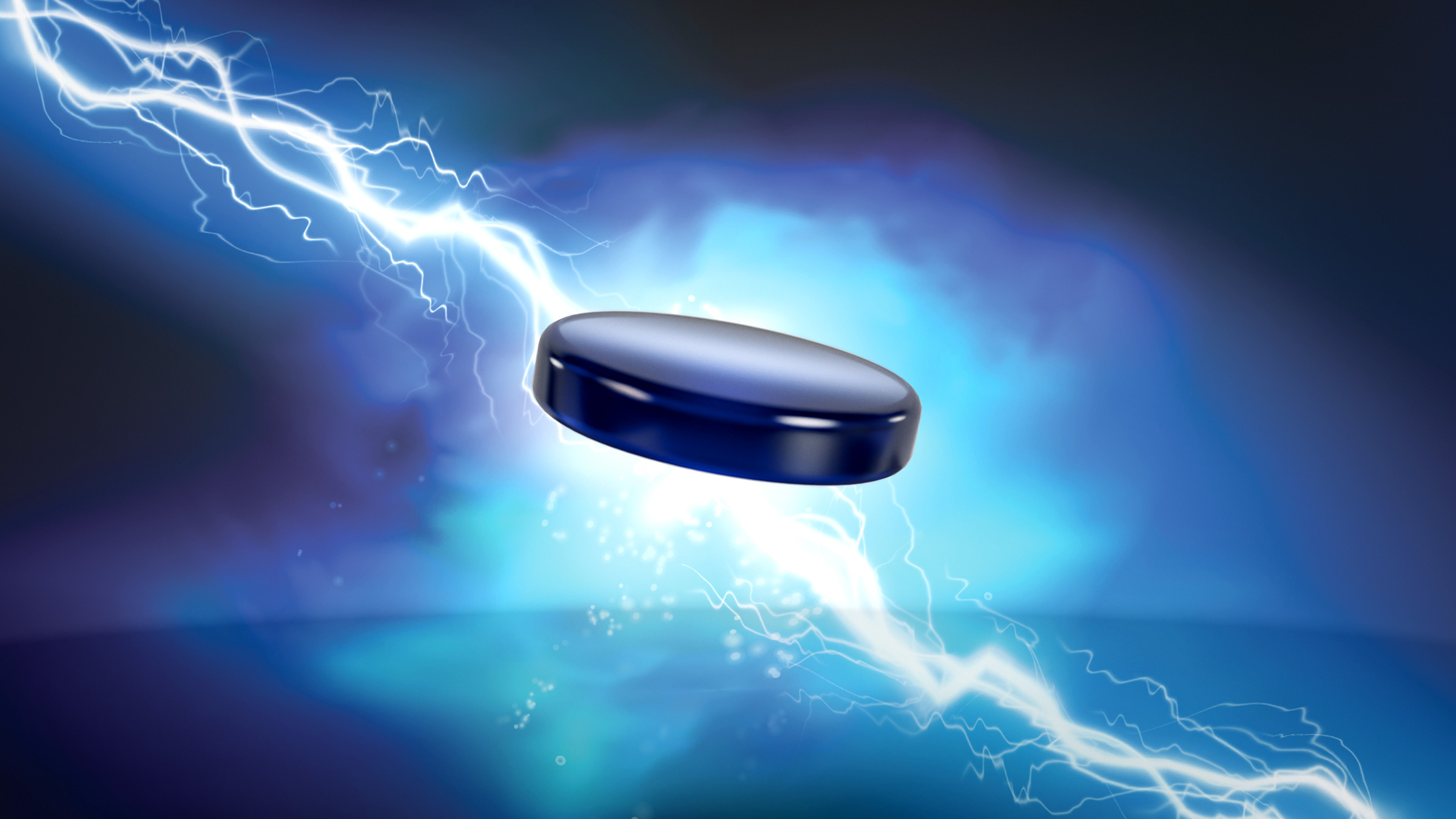Few areas of research have captivated scientists more than the search for room-temperature superconductivity. Finding a way to reduce energy loss as electricity travels over transmission lines and across wires would profoundly change society. It would deliver nearly unlimited energy, turbocharge compute speeds, and introduce new and better ways to use computers and other electronics.
Yet assembling the right mix of materials to achieve room temperature superconductivity has eluded researchers for more than a century. Time and time again, physicists have announced breakthroughs that were later found to be irreproducible, in error, or even fraudulent. Consequently, the challenge—achieving superconductivity at or near room temperature (around 293K, or 20°C) and at ambient pressure—remains a holy grail of physics and materials science.
“It’s an extraordinarily complex equation that involves more than materials, temperatures, and pressures,” said Alan Kadin, a technical consultant in the field and a former professor of electrical engineering at the University of Rochester. At best, he said, any viable commercial solution remains years away. “The real question is, even if a breakthrough occurs in the laboratory, is it possible to create a technology that is consistently reproducible and manufacturable? Can we make this work outside a lab?”
The issue is once again simmering. In January 2024, a group of researchers from Europe and South America announced they had achieved a milestone in room-temperature ambient-pressure superconductivity. Using Scotch-taped cleaved pyrolytic graphite with surface wrinkles, which formed line defects, they observed a room-temperature superconducting state. Their paper, published in the journal Advanced Quantum Technologies, has gained considerable attention in the scientific world.a
“This is an important pioneering step,” asserted Vinokur Valerii, a condensed matter physicist who is Chief Technology Officer at Terra Quantum AG in St. Gallen, Switzerland, and a member of the team. Although many in the scientific community remain incredulous, if valid, this development could help solve a key piece of the puzzle: how defects and wrinkles in a material such as scotch-taped cleaved pyrolytic graphite (HOPG) affect electrical properties and behavior within superconductive systems.
Power Plays
All modern electrical systems require some form of conduction. Yet, with conventional systems that rely on copper, for instance, electrons in motion constantly bump into nuclei, thus resulting in heat and energy loss. For example, the U.S. Energy Information Administration (EIA) estimates that 5% of electricity generated is lost in transmission. Superconductors, on the other hand, exhibit unique properties that overcome this issue. Their atomic structure permits them to maintain a constant electrical flow with near-zero energy loss.
Room temperature superconductivity could introduce more efficient power grids, better magnetic resonance imaging (MRI), faster Magnetic Levitation (Maglev) trains, and new motors and scientific instruments. The impact on computing would also be profound, said Thomas Conte, associate dean at the College of Computing for the Georgia Institute of Technology. “The ability to use packets of quantum charge that operate as pulses could significantly advance neuromorphic AI computing while drastically reducing the power required to run datacenters,” he said.
The concept is not new. In 1911, Dutch physicist Heike Kamerlingh Onnes discovered that mercury becomes a superconductor at temperatures very close to absolute zero, otherwise known as 0 degrees Kelvin.b He also found that the same principle applies to lead and tin.
Yet it was more than 75 years until so-called high-temperature superconductors entered the picture. Georg Bednorz and Karl Müller of IBM’s Zürich Research Lab captured the Nobel Prize in physics in 1987 for their discovery of superconductivity in ceramic materials.c The same year, Paul Chu at the University of Houston introduced Yttrium Barium Copper Oxide (YBCO), which can be conductive at a critical temperature above 90 degrees Kelvin, with the aid of liquid nitrogen.d
At that point, research mostly stalled out. While superconductivity can occur in liquid nitrogen, liquid helium, hydrogen, indium, and other elements under the right set of conditions, getting to room-temperature superconductivity is incredibly difficult. One reason is that compounds that display superconductivity—metals, polymers, and oxides—are incredibly rare, and many require specific pressures or conditions to perform in a desired manner. In addition, it’s also difficult to get electrons to behave as needed—as so-called Cooper Pairs (electron pairs). This requires a complex set of conditions, including the right energy gap to pull them together.
In recent years, researchers have explored numerous materials, including hydrogen compounds such as lanthanum decahydride and ceramics such as YBCO. The problem with these compounds and classes of materials, Kadin said, “is that they are difficult to produce at scale and difficult to work with at room temperature. It isn’t that you simply cool the compound to make it work; there are high costs associated with some of these materials and they require highly specialized equipment.”
The challenges don’t stop there. In many cases, a superconductive material that works well for a standard electrical motor or power delivery system won’t superconduct for electronic applications built with transistors and circuits. “To make something that works like a controlled switch, you need to mix it with other compounds. You need to do more than just send the current through it,” Conte pointed out.
That’s where a mechanism called a Josephson Junction enters the picture. It is a tiny device made from two superconductors separated by a thin barrier, like an insulator or a layer of another metal. This design allows quantum mechanical effects to take place, including allowing electrical signals to travel without resistance. So far, “The compounds that are used for this electrical device haven’t yet been able to achieve the level of integration needed for modern electronic circuits and systems,” Kadin said.
This has set scientists off on a search for new materials and new ways to achieve superconductivity.
Physics Rules
Over the last decade, several groups of scientists have aimed their efforts at room-temperature superconductivity. In 2014, researchers published a paper in Nature claiming to have used infrared laser pulses to achieve brief superconductivity at room temperature using sulfur hydride.e A year later, another group suggested in Nature that they could make hydrogen compounds superconduct at up to 260 degrees Kelvin (-13 degrees Celsius) with an atmospheric pressure about 1.5 million times greater than normal.f A 2018 study identified a possible superconducting phase at 260 degrees Kelvin using lanthanum decahydride at about 200 million times atmospheric pressure.g
Yet arriving at a verifiable and repeatable solution—let alone an approach that could work in a commercial context—has proven elusive. Several research groups have faced criticism for sloppy, error-prone, or unreproducible methods. In 2023, for example, a team from Korea claimed to have achieved room temperature superconductivity with a Cu-doped lead apatite (also referred as PCPOSOS) that they dubbed LK-99.h,i However, their research was later dismissed by the scientific community as factually inaccurate.j In 2023, Nature retracted a paperk from a group at the University of Rochester, who had conducted work on N-doped lutetium hydride material.l
“We haven’t reached a point where there is a clear path to room temperature superconductivity because researchers are either overly enthusiastic or deceptive,” said Elie Track, chief technology officer at HYPRES, Inc., an Elmsford, NY, company that develops and commercializes superconductor integrated circuits (ICs) and systems. “People fail to check measurements and others can’t reproduce their results. There is a lot of carelessness and sloppy science surrounding the space because people are so eager to achieve success.”
The team conducting research into scotch-taped cleaved pyrolytic graphite believe their discovery could tilt the search for practically useful room-temperature superconductivity in a favorable direction. They reported they were able to achieve one-dimensional superconductivity in pyrolytic graphite at temperatures as great as 300 degrees Kelvin (26.85 degrees Celsius), and at ambient pressure. Vinokur and physicist Maria Cristina Diamantini described the development as the first “unambiguous experimental evidence” for a global room temperature zero-resistance state.
If true, the team’s research could illuminate a path to new superconducting materials. It takes aim at a crucial part of a larger challenge. “You have these defects that cause electrons to pair up, allowing superconductivity to occur,” said Diamantini, a researcher in the physics department of the University of Perugia in Italy. The next step is to develop wires and other “material formations” that will carry the same superconducting properties and become components within superconducting devices. “We can now look for materials with specific defects that create strain, including materials like graphite,” she added.
The group says its research pushes beyond Bardeen-Cooper-Schrieffer theory (BCS), which serves as a standard textbook description of superconductivity.m It asserts that electron pairs form due to interactions with lattice vibrations (phonons) at very low temperatures. Instead, the group used interactions with the lattice vibrations to incorporate only strain fluctuations and geometrically restricted electrons. This permits superconductivity to occur at temperatures 100 times greater than usual for superconductivity, Diamantini said.
Others remain skeptical, however. Kadin, for example, pointed out that one of the key researchers for the project, Yakov Kopelevich, has been working in the field for two decades and, so far, “The results are not reproducible in other labs…Until someone else independently reproduces these results, I think we can safely ignore them,” he argued.
Taming the Resistance
Regardless of how the latest research into bulk pyrolytic graphite plays out, the scientific community is continuing to explore materials and techniques that support room-temperature superconductivity. Vinokur said the field has always yielded unexpected, and sometimes surprising, results. “Superconductivity itself was discovered in 1911, and it took 55 years to arrive at the first practical application, but when so-called high-temperature superconductivity was discovered in 1986, it took only a few years to get to practical use,” he said.
Indeed, after MRIs and Maglev trains appeared, advanced electric motors, particle accelerators, and quantum computers followed. Room-temperature superconductivity would introduce greater efficiencies in today’s systems, but it would also create opportunities for entirely new types of computing, battery systems, and electronics. This includes highly specialized types of quantum computers, and new and more sustainable ways to transport electricity.
For now, engineers will have to remain content with the existing class of superconductors, which continue to push many technologies forward. “There is a lot of remaining engineering to be done to get to the point where we have operating circuits,” Conte said. Yet as scientists continue to bang away at the superconducting challenge — including the possibility of using generative AI to explore materials and techniques — optimism is growing that a major breakthrough could occur.
“If we can reach a point where room temperature superconductivity is feasible and its materials properties can be controlled, we will likely see a revolution in electronics and computing,” Track said. “We could also see datacenters with more than 10 times lower energy consumption and new types of scientific instruments. This is a technology that could fundamentally change our lives.”
Further Reading
- Bardeen, J., Cooper, L.N., and Schrieffer, R.
Theory of Superconductivity, American Physical Society, Vol. 108, Issue 5., 1175, December 1, 1957; https://journals.aps.org/pr/abstract/10.1103/PhysRev.108.1175 - Kopelevich, Y., Torres, J., da Silva, R., Oliveira, F., Diamantini, M.C., Trugenberger, C., and Vinokur, V.
Global Room-Temperature Superconductivity in Graphite, Advanced Quantum Technologies, Vol. 7, Issue 2, December 31, 2023, https://onlinelibrary.wiley.com/doi/10.1002/qute.202300230 - Marouchkine, A.
Room-Temperature Superconductivity, Cambridge International Science Publishing, https://arxiv.org/pdf/cond-mat/0606187.pdf - Garisto, D.
Superconductivity Scandal: The Inside Story of Deception in a Rising Star’s Physics Lab, Nature, March 8, 2024, https://www.nature.com/articles/d41586-024-00716-2




Join the Discussion (0)
Become a Member or Sign In to Post a Comment